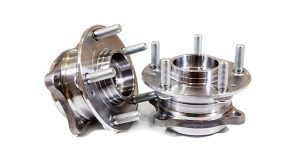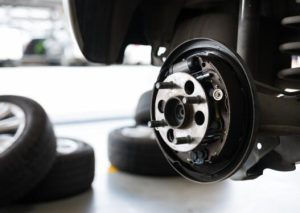When your wheel hub or bearing fails, you’re faced with a decision: should you install an OEM (Original Equipment Manufacturer) replacement or opt for an aftermarket unit? The answer isn’t always clear-cut. It depends on the quality of the parts, your application, cost, and reliability. This article walks through the pros and cons, key considerations, and best practices so you can make a confident decision. And if you need a quality replacement, remember you can Buy Wheel Hub & Bearings online.

Definitions & Basic Differences
-
OEM Hubs/Bearings are made by the same (or licensed) manufacturer that produced the parts for the vehicle when it was new. They are designed to meet the original vehicle specifications in terms of dimensions, tolerances, materials, and sensor integration.
-
Aftermarket Hubs/Bearings are made by independent manufacturers not contractually tied to the original automaker. They may follow OEM specs or offer variations (enhanced seals, improved materials, etc.). The quality across aftermarket units can vary more widely.
Pros & Cons: OEM vs Aftermarket
Here’s a comparison table summarizing strengths and tradeoffs:
| Factor | OEM Hubs/Bearings | Aftermarket Hubs/Bearings |
|---|---|---|
| Fit and Compatibility | Very precise; same as original design | Can sometimes require slight adjustments or careful selection |
| Quality Control & Trust | High consistency, often stricter QC | Varies; premium aftermarket brands come close to OEM quality |
| Sensor & ABS Integration | Guaranteed correct ABS tone ring, sensor fit | Cheaper units may have sensor misalignment or inferior tone rings — “A low-quality wheel hub assembly … often economize by trying to use the same component for many vehicles, causing problems with ABS or traction control systems.” |
| Cost | Usually more expensive | Often more affordable; more competitive pricing |
| Availability | Good, but some rare or discontinued parts may be harder to source | Easier to source alternatives, especially for older vehicles |
| Warranty & Support | Typically backed by vehicle manufacturer or supplier warranty | Warranty varies widely between aftermarket manufacturers |
| Opportunity for Upgrades | Limited to “stock spec” | You may find bearings with better seals, stronger materials, or improved performance |
One aftermarket source notes that premium aftermarket hubs, especially for trailers, can sometimes outperform OEM when chosen carefully. Another analysis of hub assemblies compares quality, cost, and compatibility of OEM vs aftermarket options.
What to Watch for in Aftermarket Units
Given that aftermarket parts have more variability, here are important criteria to assess:
-
Brand reputation & certifications
Look for ISO or SAE certifications and brands known for bearing expertise (SKF, Timken, NSK, NTN). -
Material quality & heat treatments
Ensure steel hardness, corrosion protection, and bearing races are made from durable alloys. -
Seals & lubrication
A good hub must have high-quality seals (e.g. triple-lip) to keep grease in and contaminants out. Poor seals are one of the top causes of failure. -
ABS sensor & tone wheel accuracy
Because modern hubs often integrate wheel speed sensors, tone rings and sensor mounting must be precise. Inexpensive aftermarket units may misalign or use generic sensor setups. -
Torque & preload correctness
Cheap parts sometimes lack correct preload design; they may loosen or fail early. -
Warranty & return policy
Prefer aftermarket products with strong warranties and clear support.
When OEM is the Safer Choice
You may prefer OEM parts in scenarios such as:
-
Critical safety systems (e.g. ABS, ESC) where sensor accuracy is vital.
-
High performance / factory-tuned cars where tolerances are tight.
-
Vehicles under warranty — some warranties require OEM parts.
-
No reputable aftermarket available for a rare or niche model.
-
Long-term reliability priority — especially in harsh environments.
OEM parts give peace of mind about fit, materials, and compatibility.
When Aftermarket Makes Sense — and How to Pick Wisely
Aftermarket hubs or bearings can be excellent value if chosen correctly:
-
Cost savings — for daily drivers where budget matters.
-
Availability — for older or discontinued models where OEM is scarce.
-
Upgraded features — better seals, higher tolerance, premium materials.
-
Competitive aftermarket brands — many users report aftermarket brands like SKF, Timken, FAG perform very well.
But only use reputable aftermarket units that match or exceed OEM specs.
Decision Flow & Checklist
Here’s a quick checklist / decision flow to guide your choice:
-
Is OEM part still available at reasonable price?
Yes → OEM is usually safer.
-
No → seek premium aftermarket.
-
-
Does your car rely heavily on integrated ABS / sensors?
-
Yes → ensure aftermarket has correct tone ring and sensor fit.
-
-
Is the vehicle used in harsh or performance conditions?
-
Yes → lean OEM or high-grade aftermarket.
-
-
What’s your budget & risk tolerance?
-
On tight budget → aftermarket is viable but choose high quality.
-
-
Check specs & ratings
-
Compare bearing load ratings, tolerances, materials.
-
-
Test fit & inspect before installation
-
Confirm no play, check seals, sensor alignment.
-
Example Use Cases
| Scenario | Recommendation | Rationale |
|---|---|---|
| Daily commuter | OEM or premium aftermarket | Stick with quality and reliability |
| Vintage / discontinued model | High-quality aftermarket | OEM may no longer exist |
| Off-road / heavy-duty use | OEM or reinforced aftermarket | Need robustness and sealing |
| Budget repair | Aftermarket from known brand | Cost-effective but mindful of quality |
Risks of Choosing Low-Grade Aftermarket Parts
Using an inferior aftermarket hub risks:
-
Premature bearing failure due to poor materials or sealing
-
ABS or traction control errors from misaligned sensors
-
Increased NVH (noise, vibration)
-
More frequent repairs, higher long-term cost
-
Safety risks if hub fails under load
One blog warns that a “low-quality wheel hub assembly is not as reliable as an OEM quality hub… installing a low-cost hub can cause major problems … the ABS system may malfunction, vibration, or premature hub failure.”
Installation Tips to Maximize Life

Whatever you choose (OEM or aftermarket), proper installation is critical:
-
Use correct torque specs on hub nuts and wheel lugs
-
Ensure clean mating surfaces
-
Avoid hammering or misalignment
-
Use proper seals / gasket surfaces
-
Avoid contaminating bearings with dirt or water during installation
-
Verify sensor alignment and proper ABS ring clearance
Incorrect installation can void any advantage of OEM or premium units.
Conclusion
Choosing between OEM and aftermarket hubs and bearings involves balancing quality, cost, availability, and risk. OEM parts generally offer reliable fit, compatibility, and warranty support. However, well-chosen aftermarket components from reputable manufacturers can provide excellent value, especially when matching or exceeding OEM specifications in seals, sensor compatibility, and materials.
When making your decision:
-
Start with OEM if it’s reasonably priced and available.
-
If going aftermarket, pick premium brands, verify specs, and inspect carefully.
-
Always install properly, torque correctly, and test before regular driving.
And when you’re ready to replace, you can Buy Wheel Hub & Bearings online to access a range of OEM and high-quality aftermarket options.
If you want me to suggest top OEM vs aftermarket brands for your specific vehicle model, I can do that too — just tell me the make, model, and year.